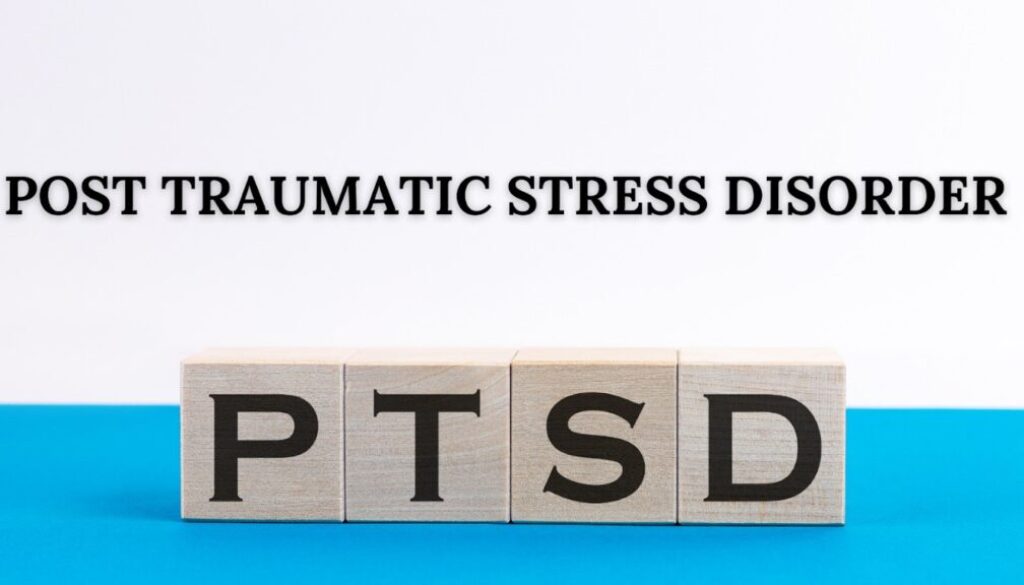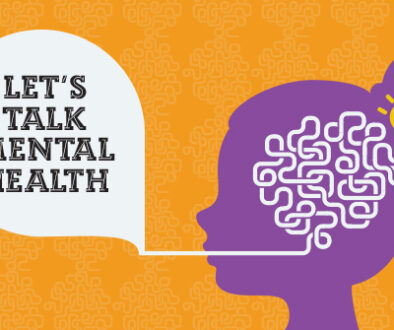Managing Post-Traumatic Stress Disorder (PTSD)
Post-traumatic stress disorder (PTSD) is a mental health condition that is triggered by a terrifying event – either experiencing it or witnessing it. It is a natural response to a traumatic event and can affect anyone, regardless of age, gender, or background. In this article, we will delve into the various aspects of managing PTSD and explore different treatment options available for individuals suffering from this condition.
Understanding PTSD
Post-traumatic stress disorder (PTSD) is a mental health condition that can develop after experiencing or witnessing a traumatic event. These events can be life-threatening, causing intense fear, helplessness, or horror. PTSD can occur in anyone, regardless of age, gender, or background, and it is a natural response to an unnatural situation.
Individuals with PTSD may experience a range of symptoms, including flashbacks, nightmares, severe anxiety, and uncontrollable thoughts about the traumatic event. These symptoms can be overwhelming and interfere with daily activities, relationships, and overall quality of life. It is crucial to understand that PTSD is a real and treatable mental health condition that requires professional help and support.
The development of PTSD is complex and can be influenced by various factors, such as the severity of the trauma, past experiences, existing mental health conditions, and available support systems. It is essential to recognize the signs and symptoms of PTSD and seek help promptly to prevent long-term negative effects on mental and emotional well-being.
Symptoms of PTSD
The symptoms of post-traumatic stress disorder (PTSD) can manifest in various ways and can have a significant impact on an individual’s daily life. These symptoms are categorized into four main groups:
- Intrusive Memories: Individuals with PTSD may experience intrusive thoughts, flashbacks, or nightmares about the traumatic event. These memories can be distressing and uncontrollable, causing significant emotional distress.
- Avoidance: People with PTSD may avoid situations, places, or people that remind them of the traumatic event. This avoidance behavior can lead to social isolation and difficulty in engaging in daily activities.
- Negative Changes in Thinking and Mood: PTSD can cause changes in thinking patterns, such as negative beliefs about oneself or others, distorted perceptions of the world, and feelings of guilt, shame, or self-blame. Mood changes, such as persistent sadness, anger, or emotional numbness, are also common symptoms of PTSD.
- Changes in Physical and Emotional Reactions: Individuals with PTSD may experience heightened physical and emotional reactions, such as irritability, anger outbursts, difficulty concentrating, exaggerated startle response, sleep disturbances, and hypervigilance. These reactions can impact relationships, work, and overall well-being.
Recognizing these symptoms is crucial for early intervention and effective treatment of PTSD. It is essential to seek professional help if you or someone you know is experiencing these symptoms to receive the necessary support and care.

Causes of PTSD
Post-traumatic stress disorder (PTSD) can be caused by a wide range of traumatic events that pose a threat to an individual’s physical or emotional well-being. These events can include:
- Military Combat: Veterans who have experienced combat and witnessed or participated in life-threatening events may develop PTSD.
- Natural Disasters: Survivors of natural disasters, such as earthquakes, hurricanes, or floods, may develop PTSD due to the traumatic impact of these events.
- Physical or Sexual Assault: Individuals who have been victims of physical or sexual assault may develop PTSD as a result of the trauma and violation experienced.
- Accidents: Survivors of serious accidents, such as car crashes or industrial accidents, may develop PTSD due to the sudden and life-threatening nature of these events.
- Childhood Trauma: Children who have experienced abuse, neglect, or maltreatment may develop PTSD that can persist into adulthood.
Understanding the causes of PTSD is essential for identifying the triggers and risk factors associated with the development of this mental health condition. By recognizing the impact of trauma on individuals’ lives, we can promote early intervention, support, and treatment for those affected by PTSD.
Diagnosis of PTSD
Diagnosing post-traumatic stress disorder (PTSD) involves a thorough assessment and evaluation by a mental health professional. The diagnostic criteria for PTSD are outlined in the Diagnostic and Statistical Manual of Mental Disorders (DSM-5) and include the following criteria:
- Exposure to a Traumatic Event: The individual must have been exposed to a traumatic event that involved actual or threatened death, serious injury, or sexual violence.
- Intrusion Symptoms: The individual must experience intrusive memories, nightmares, flashbacks, or distressing thoughts related to the traumatic event.
- Avoidance: The individual may avoid reminders of the traumatic event, such as places, people, or activities that evoke distressing memories.
- Negative Changes in Cognition and Mood: The individual may experience negative thoughts or feelings, such as guilt, shame, or distorted beliefs about oneself or the world.
- Changes in Arousal and Reactivity: The individual may exhibit irritability, angry outbursts, hypervigilance, exaggerated startle response, or difficulty concentrating.
To receive a diagnosis of PTSD, an individual must meet specific criteria and demonstrate a significant impairment in social, occupational, or other areas of functioning. It is essential to seek professional help for an accurate diagnosis and appropriate treatment to manage the symptoms of PTSD effectively.

Treatment Options for PTSD
There are several treatment options available for individuals suffering from post-traumatic stress disorder (PTSD), including:
- Medication: Psychiatric medications, such as antidepressants, anti-anxiety medications, and mood stabilizers, may be prescribed to help manage symptoms of PTSD.
- Therapy: Psychotherapy, including cognitive-behavioral therapy (CBT), exposure therapy, eye movement desensitization and reprocessing (EMDR), and group therapy, can help individuals process traumatic experiences and develop coping strategies.
- Self-Help Strategies: Engaging in relaxation techniques, mindfulness practices, physical exercise, and journaling can help individuals cope with symptoms of PTSD on a daily basis.
- Lifestyle Changes: Making lifestyle changes, such as maintaining a healthy diet, getting regular exercise, avoiding substances like alcohol and drugs, and improving sleep hygiene, can significantly improve PTSD symptoms.
- Alternative Therapies: Alternative therapies, such as acupuncture, yoga, meditation, and art therapy, may complement traditional treatment approaches and promote emotional healing.
By exploring these treatment options and working with mental health professionals, individuals with PTSD can develop a comprehensive treatment plan that meets their specific needs and promotes recovery and healing.
Medication for Treating PTSD
Medication may be prescribed as part of a comprehensive treatment plan for individuals with post-traumatic stress disorder (PTSD). Common medications used to treat PTSD include:
- Antidepressants: Selective serotonin reuptake inhibitors (SSRIs) and serotonin-norepinephrine reuptake inhibitors (SNRIs) are commonly prescribed to help manage symptoms of depression, anxiety, and intrusive thoughts.
- Anti-Anxiety Medications: Benzodiazepines may be prescribed to help manage symptoms of anxiety, insomnia, and hyperarousal in individuals with PTSD.
- Mood Stabilizers: Mood stabilizers, such as lithium or anticonvulsants, may be used in conjunction with other medications to help stabilize mood and manage emotional dysregulation in individuals with PTSD.
It is essential to work closely with a healthcare provider to monitor medication efficacy, potential side effects, and overall treatment progress. Medication should be used in combination with therapy, self-help strategies, and lifestyle changes to maximize treatment outcomes and promote long-term recovery from PTSD.

Therapy for Managing PTSD
Therapy is a crucial component of managing post-traumatic stress disorder (PTSD) and can help individuals process traumatic experiences, develop coping strategies, and improve overall well-being. Some common types of therapy used to treat PTSD include:
- Cognitive-Behavioral Therapy (CBT): CBT is a structured and evidence-based therapy that focuses on identifying and changing negative thought patterns and behaviors associated with PTSD. It helps individuals develop coping skills, challenge distorted beliefs, and reduce avoidance behaviors.
- Exposure Therapy: Exposure therapy involves gradually confronting and processing traumatic memories or situations in a safe and controlled environment. This therapy helps individuals desensitize to triggers and reduce the intensity of their emotional reactions.
- Eye Movement Desensitization and Reprocessing (EMDR): EMDR is a specialized therapy that uses eye movements or other bilateral stimulation techniques to help individuals process traumatic memories and alleviate emotional distress. It can be effective in reducing symptoms of PTSD.
- Group Therapy: Group therapy provides a supportive and understanding environment for individuals with PTSD to share their experiences, learn from others, and develop interpersonal skills. It fosters a sense of community and connection among participants.
- Mindfulness-Based Therapies: Mindfulness practices, such as mindfulness meditation and yoga, can help individuals with PTSD increase self-awareness, reduce stress and anxiety, and promote emotional regulation.
Therapy can be tailored to meet the individual needs and preferences of each person and can be highly effective in reducing symptoms of PTSD and improving overall quality of life.
Self-Help Strategies for Coping with PTSD
In addition to therapy and medication, there are several self-help strategies that individuals with post-traumatic stress disorder (PTSD) can use to cope with symptoms and promote healing. Some self-help strategies for managing PTSD include:
- Education: Learn about PTSD, its symptoms, and potential triggers to better understand your experiences and develop coping strategies.
- Journaling: Keep a journal to express your thoughts and emotions, track your symptoms, and identify patterns in your behavior.
- Relaxation Techniques: Practice relaxation techniques, such as deep breathing, progressive muscle relaxation, or guided imagery, to reduce stress and anxiety.
- Physical Exercise: Engage in regular physical exercise, such as walking, jogging, yoga, or swimming, to improve mood, reduce tension, and promote overall well-being.
- Social Support: Build a support network of friends, family members, or support groups to share your experiences, seek guidance, and receive emotional support.
- Mindfulness Practices: Practice mindfulness meditation, yoga, or tai chi to increase self-awareness, reduce reactivity to triggers, and promote emotional regulation.
By incorporating these self-help strategies into your daily routine, you can enhance your ability to manage symptoms of PTSD and cultivate resilience and healing.
Lifestyle Changes to Improve PTSD Symptoms
Making positive lifestyle changes can play a significant role in improving symptoms of post-traumatic stress disorder (PTSD) and promoting overall well-being. Some lifestyle changes that may help individuals with PTSD include:
- Healthy Diet: Maintain a balanced diet rich in fruits, vegetables, whole grains, lean proteins, and healthy fats to support mental and physical health.
- Regular Exercise: Engage in regular physical activity, such as walking, jogging, cycling, or yoga, to reduce stress, improve mood, and increase energy levels.
- Quality Sleep: Establish a regular sleep schedule, practice good sleep hygiene, and create a relaxing bedtime routine to improve sleep quality and overall well-being.
- Avoid Substance Use: Limit or avoid the use of alcohol, drugs, and tobacco, as they can worsen symptoms of PTSD and interfere with treatment effectiveness.
- Stress Management: Practice stress-reduction techniques, such as deep breathing, mindfulness meditation, or progressive muscle relaxation, to cope with stress and promote relaxation.
- Mindfulness Practices: Cultivate mindfulness through practices like meditation, yoga, or tai chi to increase self-awareness, focus, and emotional regulation.
Alternative Therapies for PTSD
In addition to traditional therapies and medication, individuals with post-traumatic stress disorder (PTSD) may find alternative therapies beneficial in managing symptoms and promoting healing. Some alternative therapies that have been used to treat PTSD include:
- Art Therapy: Art therapy involves creative expression through visual arts, such as drawing, painting, or sculpting, to process emotions, reduce stress, and explore traumatic experiences.
- Music Therapy: Music therapy uses music and sound techniques to promote relaxation, reduce anxiety, and address emotional and psychological issues related to PTSD.
- Animal-Assisted Therapy: Animal-assisted therapy involves interactions with trained animals, such as therapy dogs or horses, to provide comfort, emotional support, and a sense of connection for individuals with PTSD.
- Equine Therapy: Equine therapy utilizes interactions with horses to promote emotional healing, develop trust and communication skills, and increase self-awareness and self-confidence in individuals with PTSD.
- Acupuncture: Acupuncture, a traditional Chinese medicine practice involving the insertion of thin needles into specific points on the body, may help reduce stress, anxiety, and physical tension associated with PTSD.
- Mindfulness-Based Practices: Mindfulness-based practices, such as mindfulness meditation, yoga, tai chi, or qigong, can help individuals with PTSD increase self-awareness, reduce reactivity to triggers, and promote emotional regulation.
While alternative therapies may not be a substitute for evidence-based treatments, they can complement traditional approaches and provide additional support for individuals with PTSD.

Support Systems for Individuals with PTSD
Support systems play a vital role in helping individuals with post-traumatic stress disorder (PTSD) cope with symptoms, navigate challenges, and promote healing and recovery. Some sources of support for individuals with PTSD include:
- Family and Friends: Loved ones can provide emotional support, understanding, and practical assistance to help individuals with PTSD feel more connected, secure, and cared for.
- Support Groups: Support groups bring together individuals with shared experiences of trauma to share their stories, offer mutual support and learn coping strategies from one another.
- Therapists and Counselors: Mental health professionals, such as therapists, counselors, or psychologists, can provide professional guidance, therapy, and treatment interventions tailored to the individual’s needs.
- Veterans Organizations: Veterans organizations, such as the Department of Veterans Affairs (VA) or nonprofit groups like the Wounded Warrior Project, offer specialized services and support for veterans with PTSD.
- Online Resources: Online resources, such as forums, chat rooms, or information websites, can provide information, education, and a sense of community for individuals with PTSD.
- Community Services: Community services, such as crisis hotlines, mental health clinics, and local support groups, can offer immediate assistance and resources for individuals in crisis or seeking help for PTSD.
By building a robust support network and accessing available resources, individuals with PTSD can receive the support and care they need to manage symptoms, address challenges, and work toward recovery and healing.
PTSD in Specific Populations (Veterans, Survivors of Abuse, First Responders, etc.)
Post-traumatic stress disorder (PTSD) can affect individuals from various populations and backgrounds, each facing unique challenges and experiences related to trauma. Some specific populations affected by PTSD include:
- Veterans: Military veterans who have experienced combat, deployment, or other traumatic events may develop PTSD due to the nature of their experiences. They may face challenges transitioning to civilian life, accessing mental health care, and managing symptoms of PTSD.
- Survivors of Abuse: Individuals who have experienced physical, emotional, or sexual abuse may develop PTSD as a result of the trauma. They may struggle with trust issues, feelings of shame or guilt, and difficulties forming healthy relationships.
- First Responders: Firefighters, police officers, emergency medical personnel, and other first responders may develop PTSD due to exposure to traumatic incidents, such as accidents, disasters, or violent crimes. They may face workplace stress, burnout, and difficulties seeking help for mental health issues.
- Refugees and Asylum Seekers: Refugees and asylum seekers who have experienced war, persecution, or displacement may develop PTSD as a result of their traumatic experiences. They may struggle with cultural adjustment, language barriers, and accessing mental health services.
- Children and Adolescents: Children and adolescents who have experienced trauma, such as abuse, neglect, or violence, may develop PTSD. They may exhibit symptoms like behavioral problems, academic difficulties, and emotional instability.
PTSD Prevention Strategies
Preventing post-traumatic stress disorder (PTSD) involves implementing strategies to reduce the risk of developing the disorder following a traumatic event. While it may not be possible to prevent all instances of PTSD, there are several strategies that can help mitigate the impact of trauma and promote resilience:
- Education and Awareness: Increasing awareness about trauma, PTSD symptoms, and resources for support can help individuals recognize the signs of distress early on and seek help when needed.
- Early Intervention: Providing timely and effective intervention, such as psychological first aid, crisis counseling, and debriefing, can help individuals process traumatic events and reduce the risk of developing long-term PTSD symptoms.
- Supportive Environments: Creating a supportive and nurturing environment, whether in the workplace, community, or family, can help individuals feel more secure, connected, and valued, reducing the impact of trauma on mental health.
- Resilience-Building Activities: Engaging in activities that promote resilience, such as mindfulness practices, physical exercise, social support, and stress-management techniques, can help individuals cope with stress and adversity more effectively.
- Trauma-Informed Care: Providing trauma-informed care in schools, workplaces, healthcare settings, and community organizations can create environments that are sensitive to the needs of trauma survivors and promote healing and recovery.
- Addressing Risk Factors: Identifying and addressing risk factors for PTSD, such as prior trauma exposure, mental health conditions, substance abuse, and lack of social support, can help reduce the likelihood of developing PTSD following a traumatic event.
By implementing these prevention strategies and fostering resilience and support in individuals and communities, it is possible to reduce the impact of trauma and promote mental health and well-being for all individuals.
Conclusion
Post-traumatic stress disorder (PTSD) is a challenging and complex mental health condition that can have a profound impact on individuals who have experienced trauma. It is essential to recognize the symptoms of PTSD, seek professional help, and access appropriate treatment options to effectively manage the disorder and promote recovery.
Ultimately, by implementing prevention strategies, fostering resilience, and promoting mental health awareness and support, we can work towards reducing the impact of trauma, preventing PTSD, and promoting overall well-being for individuals and communities. Together, we can strive towards a future where trauma survivors feel heard, supported, and empowered to heal and thrive.
Also Read:



